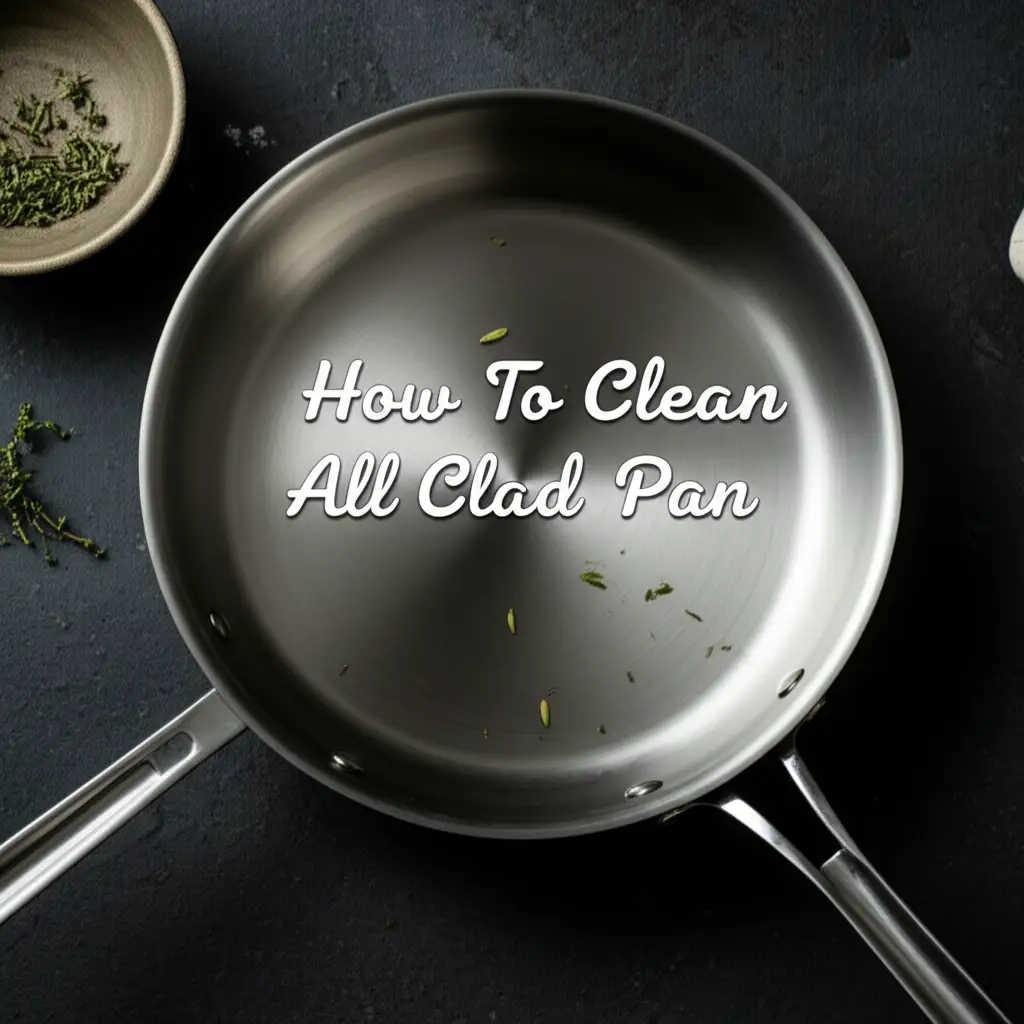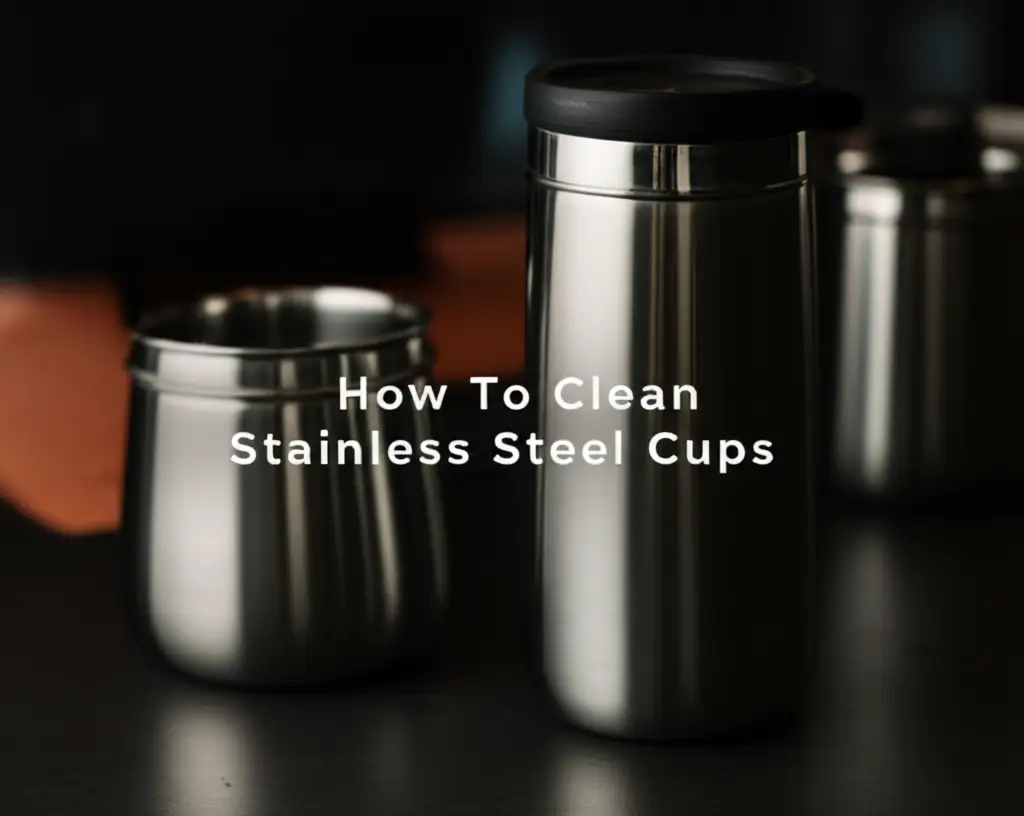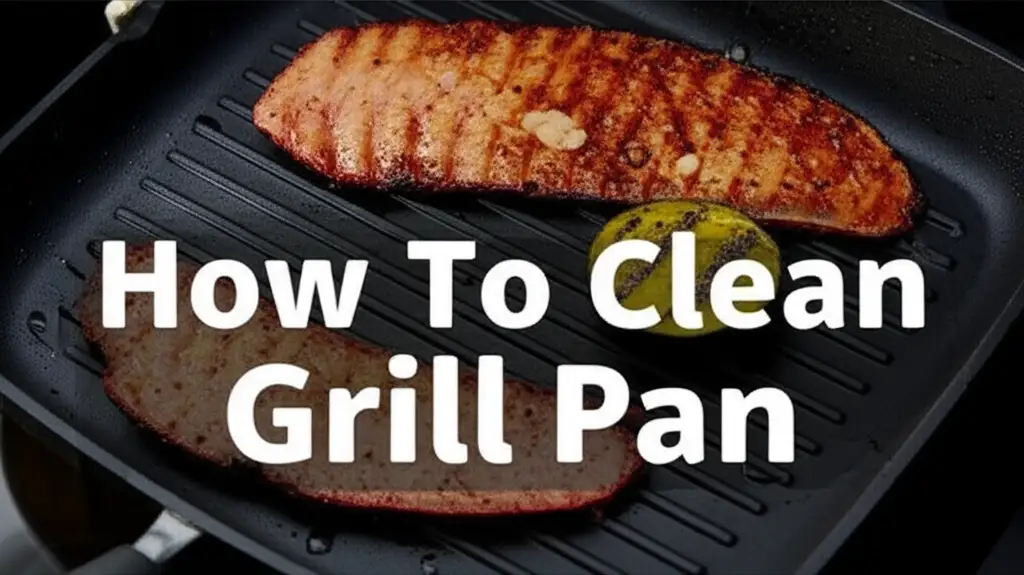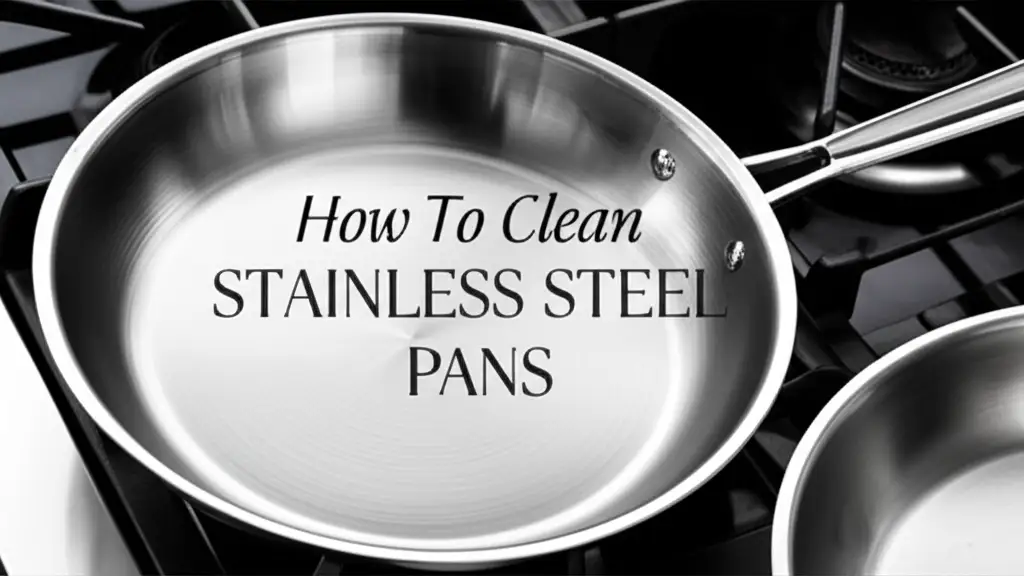· Kitchen Care · 13 min read
How To Clean Non Stick Frying Pan
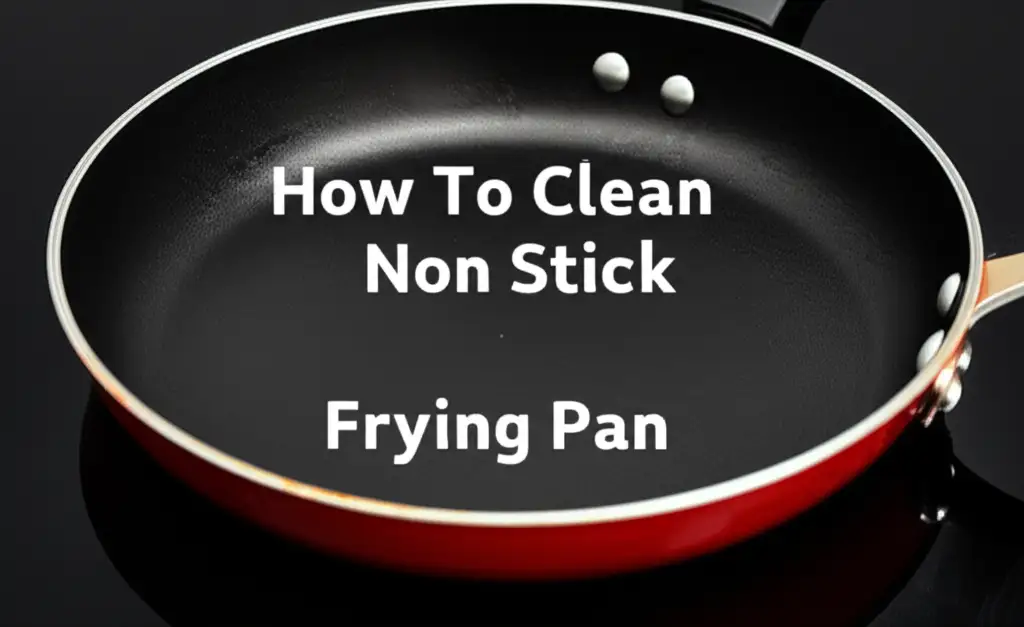
Keep Your Non-Stick Frying Pan Spotless: A Guide to Cleaning
Imagine your non-stick frying pan. It makes cooking delightful. Eggs slide, pancakes flip, and sauces simmer without sticking. This special coating makes cooking easy, but it needs care. A non-stick pan can lose its magic if you clean it wrong. Knowing how to clean non stick frying pan surfaces correctly is very important.
This guide will show you simple, effective ways to clean your non-stick frying pan. We will cover daily cleaning, handling tough food, and keeping your pan in top condition. You will learn what cleaners to use and what to avoid. Get ready to make your pan last longer and perform better.
Takeaway
- Always let your non-stick pan cool before washing.
- Use warm, soapy water and a soft sponge for everyday cleaning.
- Address burnt food gently with baking soda and water paste.
- Never use abrasive scrubbers or harsh chemicals.
- Handwash is best; avoid the dishwasher for pan longevity.
- Store your pan carefully to prevent scratches.
How do you clean a non-stick frying pan?
To clean a non-stick frying pan, let it cool completely. Then, wash it by hand using warm water, a small amount of dish soap, and a soft sponge or cloth. Gently wipe away food residue. Rinse thoroughly and dry the pan immediately to prevent water spots.
Understanding Your Non-Stick Pan: Why Gentle Care Matters
Your non-stick frying pan has a special coating. This coating allows food to slide off easily. Materials like PTFE (Teflon), ceramic, or silicone are common in these coatings. They make cooking enjoyable and cleanup quick. This layer is delicate. Harsh cleaning methods damage it.
When the non-stick coating gets scratches or wears away, food starts to stick. This makes cooking frustrating. It also affects how long your pan lasts. A damaged coating can lose its non-stick properties very fast. Proper care protects this surface. It ensures your pan works well for a long time. I always tell my friends to treat their non-stick pans with respect.
Using the right tools and cleaners is important. Metal utensils, abrasive scrubbers, or strong detergents can harm the coating. They create tiny scratches. These scratches build up over time. Eventually, they cause food to stick. Knowing this helps you choose safe cleaning methods. It ensures your pan stays useful and effective.
Think of your pan’s surface as skin. You would not use sandpaper on your skin. Similarly, harsh tools hurt your pan. Gentle cleaning protects the non-stick layer. It keeps the surface smooth and slippery. This understanding forms the base of good non-stick pan care. It means cooking remains a joy.
Everyday Cleaning: The Basics of Non-Stick Pan Care
Cleaning your non-stick frying pan after each use is simple. The goal is to remove food residue without harming the coating. First, let the pan cool down completely. Putting a hot pan into cold water can cause warping. This warping can damage the non-stick layer over time. I learned this the hard way with one of my favorite pans.
Once the pan is cool, wash it by hand. You need warm water and a small amount of mild dish soap. Use a soft sponge, a dishcloth, or a silicone scrubber. Gently wipe the inside and outside surfaces of the pan. Avoid any abrasive scrubbers, even “non-scratch” ones if they feel rough. These can still cause damage to the delicate surface.
Rinse the pan thoroughly with clean water. Make sure no soap residue remains. Soap residue can leave a film. This film can make your pan feel less non-stick next time you cook. After rinsing, dry the pan immediately. Air drying can lead to water spots. These do not harm the pan but look less appealing. Drying also prevents mineral buildup.
For most daily messes, this basic method works perfectly. It keeps your non-stick pan in good condition. Regular, gentle cleaning extends the life of your pan. It also ensures consistent cooking performance. This simple routine protects your investment.
Dealing with Stubborn Food Residue and Burnt Spots
Sometimes, food sticks more than usual. This can happen with burnt sugar or sauces. Do not panic. You can still clean these spots without damaging your non-stick pan. The key is patience and gentle methods. Avoid scraping at the burnt areas with anything sharp or metallic.
Start by letting the pan cool down. Then, fill the pan with warm water. Add a few drops of dish soap. Let it soak for about 15-30 minutes. This helps loosen the food. After soaking, try to gently wipe the residue away with your soft sponge. For tougher spots, you might need more help.
A paste of baking soda and water works wonders. Mix equal parts baking soda and water to form a thick paste. Apply this paste directly onto the stubborn or burnt areas. Let it sit for 15-20 minutes. Baking soda is a gentle abrasive that can break down grime. After it sits, gently scrub with your soft sponge. This method is effective for loosening burnt-on food. For more severe burnt non-stick surfaces, you might find specific techniques helpful. You can learn more about how to clean burnt non-stick baking sheet for similar tough situations.
If you have a sticky, burnt mess, like caramelized sugar, combine soaking with the baking soda paste. You can also carefully heat a small amount of water in the pan on low heat, then turn off the heat and let it cool. This can sometimes loosen very sticky residues. Be careful with heat on a damaged non-stick pan. If you ever face how to clean burnt sugar from a pan, these gentle steps apply. Rinse well after cleaning and dry your pan. This gentle approach keeps your non-stick coating intact.
Cleaning the Exterior and Bottom of Your Frying Pan
People often focus only on the inside of the non-stick frying pan. The outside and bottom also need attention. Grease and food splatters can build up. This buildup can become sticky and hard to remove. Cleaning the exterior keeps your kitchen looking tidy. It also ensures even heat distribution when cooking.
For light grease, warm soapy water and a soft cloth work fine. Wipe down the sides and bottom after each use. This prevents buildup from becoming a big problem. If you notice sticky residue, a simple solution of vinegar and water can help. Mix equal parts white vinegar and water. Dampen a cloth with this mixture. Wipe the exterior surfaces. Vinegar is a natural degreaser. It cuts through grime without harsh chemicals. This is a great tip for general kitchen cleaning. You can read more about how to clean with vinegar and baking soda for other household tasks.
For tough, burnt-on grease on the bottom, avoid harsh scrubbers. Instead, create a paste using baking soda and a little water. Apply the paste to the affected areas on the pan’s bottom. Let it sit for at least 30 minutes, or even a few hours for very stubborn spots. The baking soda helps to lift the grease. After soaking, use a non-abrasive scrubber or old toothbrush. Gently scrub the areas. Rinse thoroughly. For persistent problems, consider techniques for how to clean burnt grease from bottom of frying pans. These methods focus on protecting the pan while removing grime.
Keeping the exterior clean prevents old grease from burning onto your stovetop. It also makes your pan look new. Regular maintenance of the outside surface is just as important as caring for the non-stick interior. It shows you care about your cookware.
Restoring and Maintaining Non-Stick Performance
Even with proper cleaning, non-stick pans can lose some performance over time. This happens due to normal wear and tear. You can take steps to restore some of the non-stick properties. You can also ensure the coating lasts longer. These simple practices make a big difference.
One common problem is food starting to stick slightly. This might mean the non-stick coating needs a little boost. You can “re-season” many non-stick pans. First, clean your pan thoroughly and dry it completely. Place it on low heat for about 30 seconds. Remove from heat. Add a teaspoon of cooking oil (like vegetable or canola oil). Using a paper towel, carefully rub the oil all over the inside surface of the pan. Wipe away any excess oil. This creates a thin, protective layer. Repeat this process every few months. It helps maintain the non-stick quality.
Proper storage also helps. Do not stack your non-stick pans without protection. Metal edges or other pans can scratch the delicate coating. Place a paper towel, a felt pan protector, or a soft cloth between stacked pans. This prevents direct contact and scratching. Hanging pans on a rack is an even better option if you have space. I store my pans this way. It saves space and keeps them safe.
Lastly, avoid high heat. Non-stick coatings perform best at low to medium temperatures. High heat can cause the coating to degrade faster. It can also release fumes. Always use the appropriate burner size for your pan. Never preheat an empty non-stick pan on high heat. These steps extend the useful life of your pan. They ensure your non-stick pan stays slick.
What to Avoid When Cleaning Non-Stick Pans
Knowing what not to do is just as important as knowing what to do. Certain actions can quickly ruin your non-stick frying pan. Avoiding these mistakes extends your pan’s life. It keeps your cooking experience smooth.
First, never use abrasive cleaners or tools. This includes steel wool, harsh scouring pads, and powdered cleansers. These products scratch the non-stick coating. Even small scratches compromise the surface. Once scratched, the pan will start to stick. The damage is often permanent. Stick to soft sponges or cloths.
Do not use metal utensils in your non-stick pan, whether cooking or cleaning. Spatulas, spoons, or whisks made of metal can gouge the coating. Always choose wooden, silicone, or plastic utensils. This applies to stirring food and scraping off residue during cleaning. My family uses only silicone tools with our non-stick pans.
Avoid extreme temperature changes. Never put a hot non-stick pan directly into cold water. This sudden change can warp the pan. Warping can also cause the non-stick coating to crack or peel. Always allow your pan to cool completely before washing.
Using a dishwasher is also a big no-no for most non-stick pans. The harsh detergents, high heat, and intense water jets in dishwashers damage the coating. They can strip away the non-stick properties over time. Handwashing is always the safest and best method for your non-stick cookware. Some pans claim to be dishwasher safe. Still, handwashing is gentler and lengthens the pan’s life.
When to Replace Your Non-Stick Pan
Even with the best care, non-stick pans do not last forever. Knowing when to replace your pan is important. Using a damaged non-stick pan can affect your cooking. It can also raise health concerns. Look for clear signs that it is time for a new one.
The most obvious sign is when the non-stick coating is visibly damaged. If you see scratches, chips, or peeling, it is time for a replacement. Once the coating starts to peel, small pieces might get into your food. This is not good for your health. A pan with a flaking coating is no longer safe to use for cooking.
Another sign is persistent sticking. If food consistently sticks, even after proper cleaning and seasoning attempts, the non-stick properties are gone. The pan has lost its effectiveness. It will make cooking frustrating. You bought a non-stick pan to prevent sticking, so if it no longer does that, it fails its main purpose.
Discoloration or warping also indicates a problem. If your pan has significant dark spots that do not wash off, it might be overheated. If the bottom of the pan is no longer flat, it is warped. A warped pan will not heat evenly. This leads to inconsistent cooking results. Uneven heating can also put stress on the non-stick coating.
Some non-stick pans have a limited lifespan, typically 3-5 years with regular use. If your pan is old and showing any of these signs, it is better to invest in a new one. A new pan will provide better cooking results and be safer.
Frequently Asked Questions About Cleaning Non-Stick Frying Pans
Can I put my non-stick pan in the dishwasher?
Most manufacturers recommend handwashing non-stick pans. Dishwashers use harsh detergents, high heat, and strong water jets. These can degrade the non-stick coating over time. Even if a pan claims to be dishwasher safe, handwashing is gentler. It extends the pan’s lifespan and maintains its non-stick properties.
How do I remove burnt food from a non-stick pan without scratching it?
Let the pan cool completely first. Fill it with warm, soapy water and let it soak for 15-30 minutes. For stubborn spots, make a paste of baking soda and water. Apply the paste, let it sit, then gently scrub with a soft sponge or cloth. Avoid harsh scrapers or metal tools.
What causes non-stick pans to lose their coating?
Several factors cause coating loss. These include using metal utensils, abrasive scrubbers, or harsh detergents. Extreme temperature changes, like putting a hot pan in cold water, can also cause damage. Overheating the pan consistently also degrades the coating quickly. Proper care prevents early wear.
Is it safe to cook on a scratched non-stick pan?
Once a non-stick pan is scratched or peeling, it is generally not recommended for continued use. Small pieces of the coating can flake off and potentially mix with your food. While experts debate the health risks, it is safer to replace a pan with a compromised coating.
How often should I deep clean my non-stick pan?
For everyday use, gentle handwashing after each use is sufficient. You do not need to deep clean often. Only deep clean if there is stubborn, burnt-on residue that regular washing does not remove. Use the baking soda paste method for these infrequent deep cleans.
Can I use vinegar or baking soda on my non-stick pan?
Yes, both vinegar and baking soda are safe for non-stick pans when used correctly. A solution of equal parts white vinegar and water can remove grease from the pan’s exterior. A paste made of baking soda and water works well for loosening stubborn or burnt-on food inside the pan. Always rinse thoroughly.
Conclusion
Keeping your non-stick frying pan clean is easy with the right approach. We explored simple, effective methods. You learned to always let your pan cool. We discussed using warm, soapy water and a soft sponge. For tougher messes, you now know the power of baking soda. Remember to avoid harsh scrubbers and metal utensils.
By following these steps, you protect the delicate non-stick coating. This extends your pan’s life. It ensures food continues to slide off with ease. A well-cared-for non-stick pan makes cooking more enjoyable. It saves you from sticky situations. Continue to care for your non-stick pan. You will enjoy effortless cooking for years to come.
- non-stick pan cleaning
- frying pan maintenance
- cookware care
- burnt food removal
- pan lifespan

